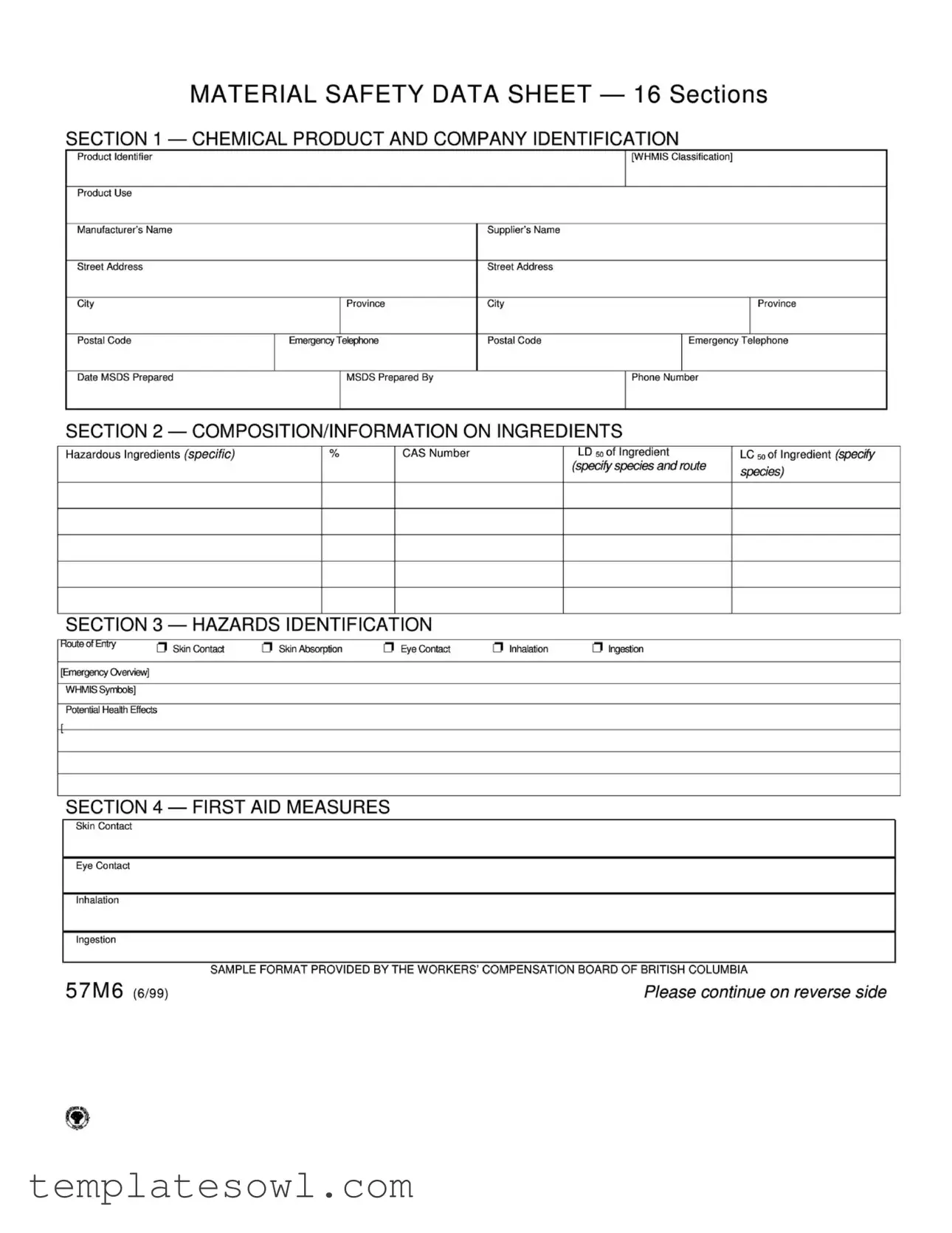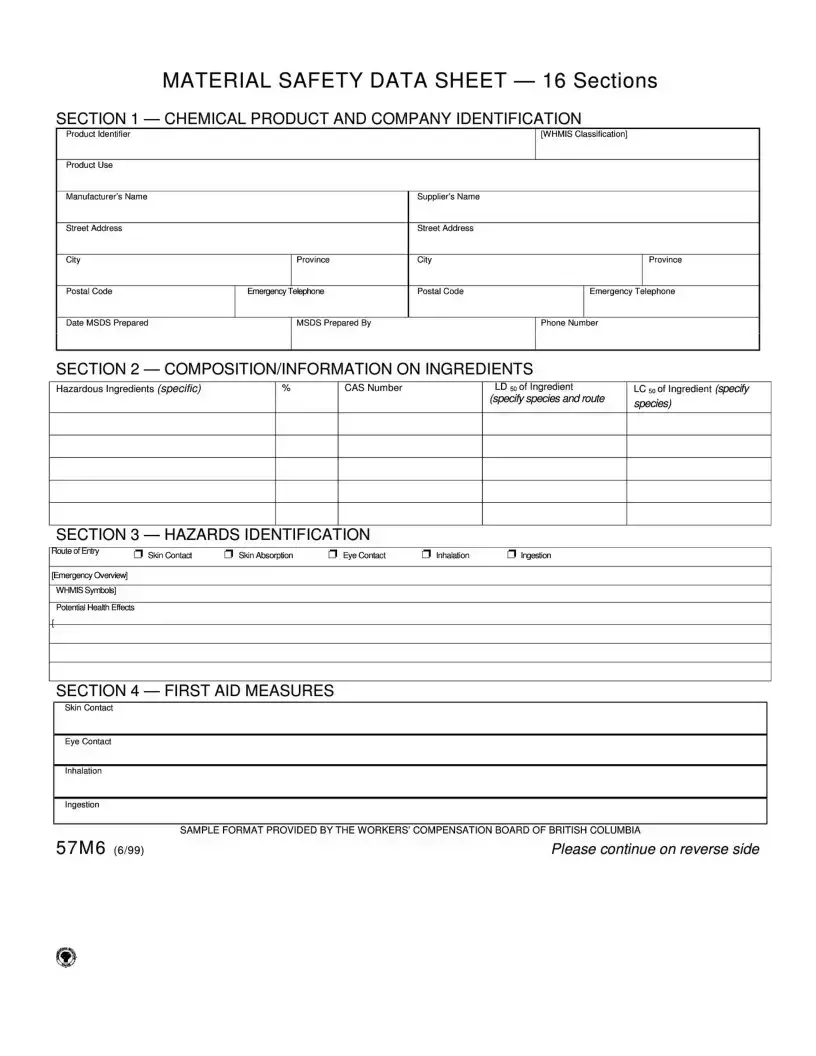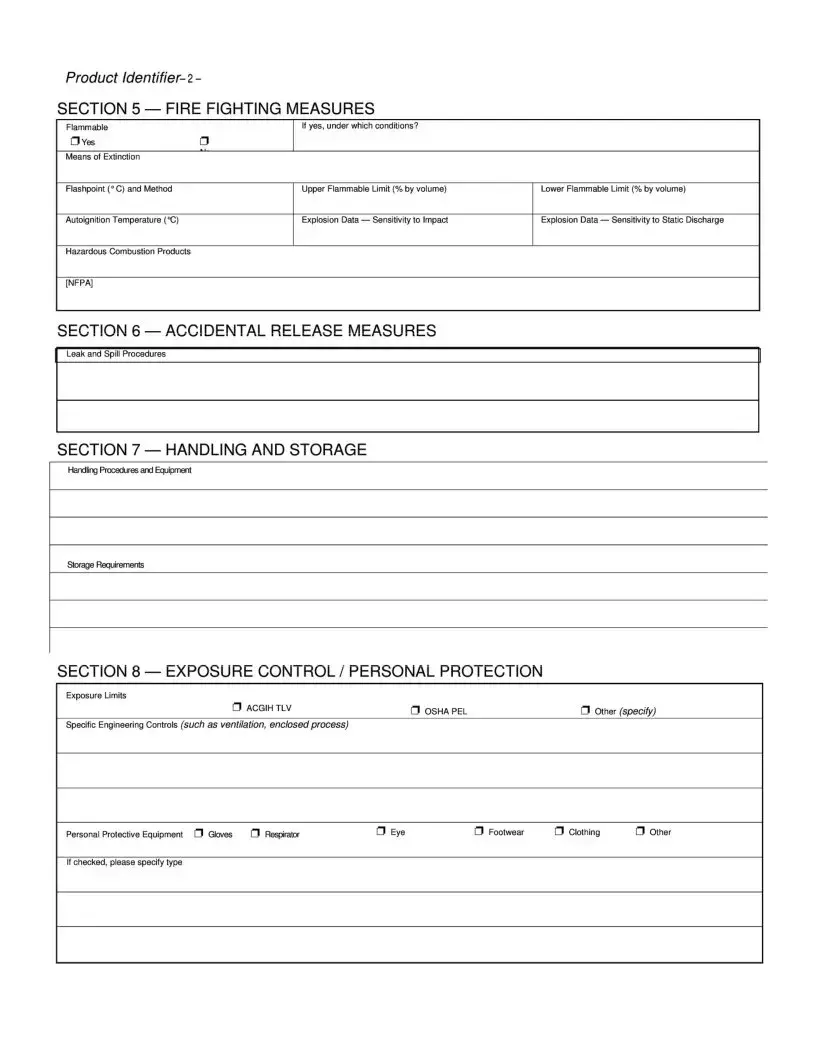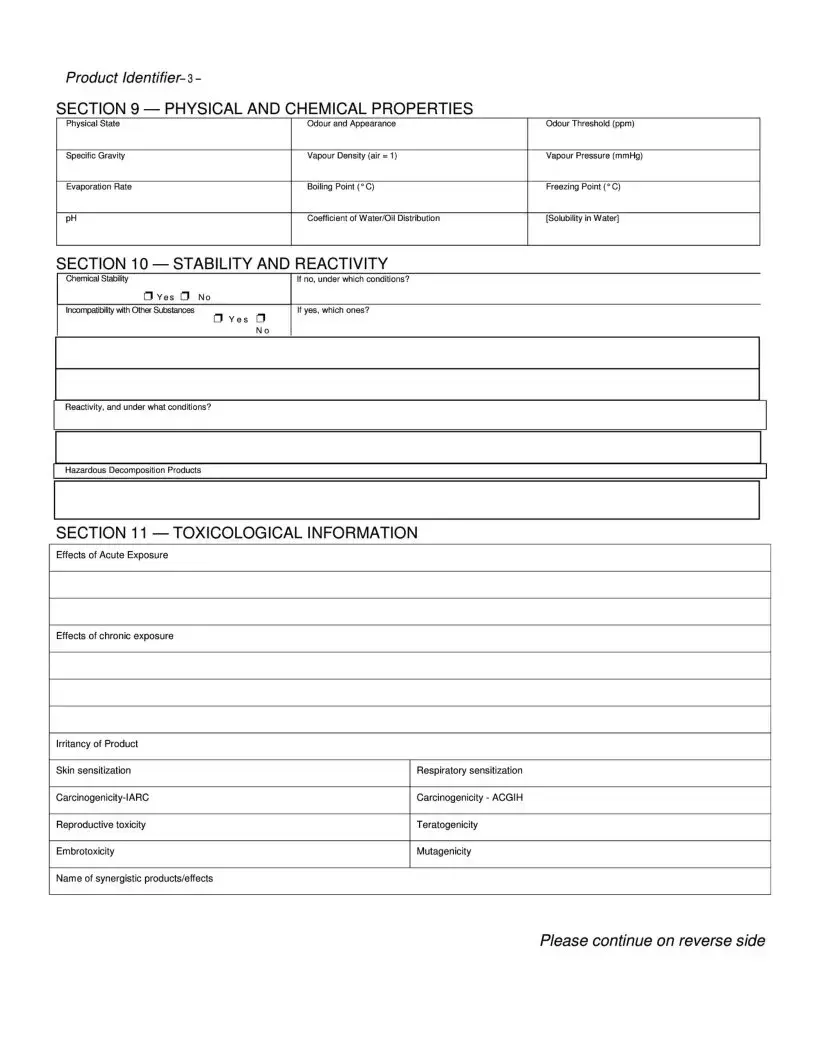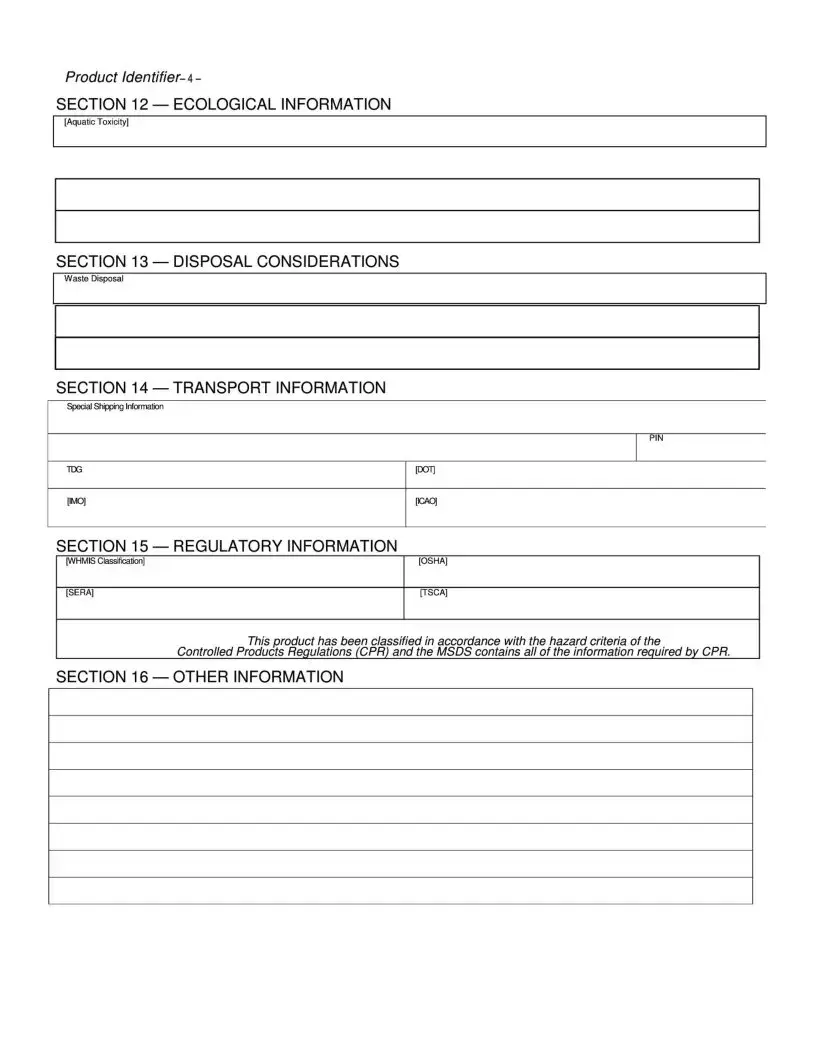What is a Material Safety Data Sheet (MSDS)?
A Material Safety Data Sheet, commonly known as an MSDS, is a document that provides detailed information about a chemical product. It includes essential details such as potential hazards, safety precautions, and handling instructions. The main purpose of an MSDS is to ensure the safety of individuals who work with hazardous materials.
What information is included in an MSDS?
An MSDS typically contains 16 sections, including information on the chemical product, hazardous ingredients, potential health effects, first aid measures, fire-fighting measures, accidental release procedures, handling and storage guidelines, exposure control, and waste disposal considerations. Each section contains specific details relevant to the chemical's safety and handling.
How should I use an MSDS?
Who prepares the MSDS?
The manufacturer or supplier of the chemical product is responsible for preparing the MSDS. They ensure that the information is accurate, up-to-date, and compliant with regulatory standards. Anyone using hazardous chemicals should always refer to the most current version of the MSDS。
What should I do in case of an emergency related to a chemical?
In case of a chemical emergency, consult the MSDS for first aid measures and emergency contact information. The sheet will provide specific instructions on what to do in specific situations, such as skin or eye contact, inhalation, or ingestion. Contact emergency services if needed and provide them with the relevant MSDS information.
Where can I find the MSDS for a product?
You can usually obtain an MSDS from the manufacturer’s website, or by contacting the supplier directly. Many companies make their MSDS available online for easy access. Additionally, workplaces that use hazardous materials should maintain an updated file of MSDSs for all chemicals in use.
What is meant by hazardous ingredients in the MSDS?
Hazardous ingredients are substances that can pose significant risks to health or safety. The MSDS will list any hazardous components contained in the chemical product, along with their concentration percentages. This information is crucial for understanding the potential risks associated with the product.
What are the fire-fighting measures listed in the MSDS?
Fire-fighting measures in the MSDS describe how to handle a fire involving the chemical product. This includes information on whether the substance is flammable, what means of extinction are recommended, and details such as flashpoint and hazardous combustion products. Following these measures can help ensure safety during a fire emergency.
What does the "exposure control/personal protection" section include?
This section outlines recommended practices for minimizing exposure to hazardous materials. It includes information on allowable exposure limits, personal protective equipment (PPE) needed, and engineering controls such as ventilation. Adhering to this guidance is essential for maintaining a safe working environment.
What regulatory information is found in an MSDS?
The regulatory information section includes details about compliance with various safety regulations, such as WHMIS, OSHA, and TSCA. This section ensures that the product meets official safety criteria and provides users with important information related to legal and safe handling of the chemical.
